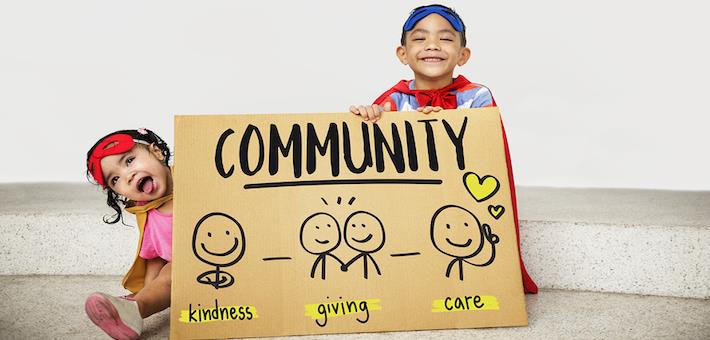
When does charity start to matter? 5-year-olds already see giving to the poor as a norm
Preschool children have a sense of fairness when it comes to giving and sharing stuff. However, is this already a sense of a norm about charity, thus of what ought to be done? A study in Journal of Experimental Child Psychology among 3 to 6-year olds shows that preschoolers aged 5 and older see charity as a norm and consider it fair to give more to someone who has less. Children younger than 5 like giving to others, but focus more on an even distribution, not distinguishing between rich and poor.
Take aways
- Young children already understand that people in need deserve to get more goods, and also enforce this norm to others.
- This is interesting, in view of the trend that sharing our goods with others is getting more and more common in many societies (see for example the sharing economy).
- This charity norm develops during the 5th year, thus education or information aimed to increase a charity norm could target children from this age onwards.
Study information
The question?
At which age do preschoolers consider charity a norm and enforce this norm towards others?
Who?
81 3- to 6-year-old preschool children (mean age: 61 months, 52% girls), divided into two groups; a younger age group including 42 children younger than 5 years (50% girls) and an older age group including 39 children older than 5 years (62% girls)
Where?
Germany
How?
The researchers presented the children with two allocation games and introduced them to six puppets. Two “receiving” puppets were poor, meaning they had 3 items (stickers or erasers) in their item collection, and two were rich, meaning they had 50 items (stickers or erasers) in their item collection. Furthermore, there were two “allocating” puppets, one who always gave more collection items to the poor recipient (the poor-more puppet), and one who always gave more collection items to the rich recipient (the rich-more puppet). The allocating puppets were always matched with one poor and one rich recipient. During these games, children were videotaped and their protest against and support of the distribution was scored.
After the allocation phase, children could distribute tasty or disgusting cookies to the two allocating puppets. In other words, they were able to reward them by giving them tasty cookies, or they could punish them by giving them disgusting cookies. Then, the researchers asked the children how much they liked the two allocating puppets and their behaviour, by pointing at four smiley faces (very bad-very good). The researchers also asked them to justify why they chose a certain smiley.
Facts and findings
- Older children protested more against the puppet who gave more items to the rich recipient than against the puppet who gave more items to the poor recipient.
- In line with this, older children supported the puppet more who gave more items to the poor recipient than the puppet who gave more items to the rich recipient.
- However, younger children did not differ in protesting or support of the two allocating puppets
- Older children rewarded the puppet who gave more items to the poor recipient more often with tasty cookies. The allocation of tasty and disgusting cookies did not differ for the puppet who gave more items to the rich recipient.
- Interestingly, young children gave more tasty cookies to both puppets, regardless of whether the puppet gave more items to the poor or the rich recipient.
- Older children were more negative about the puppet who gave more items to the rich recipient than the puppet who gave more items to the poor recipient. Younger children did not make this distinction.
- Compared to younger children, older children more often justified their liking of the puppets with the recipients’ differences in wealth, for example mentioning that they liked the puppet more because it gave more items to the poor recipient, and less to the rich recipient.